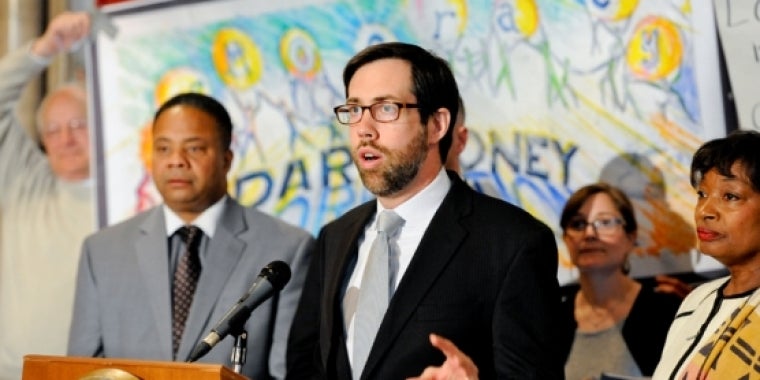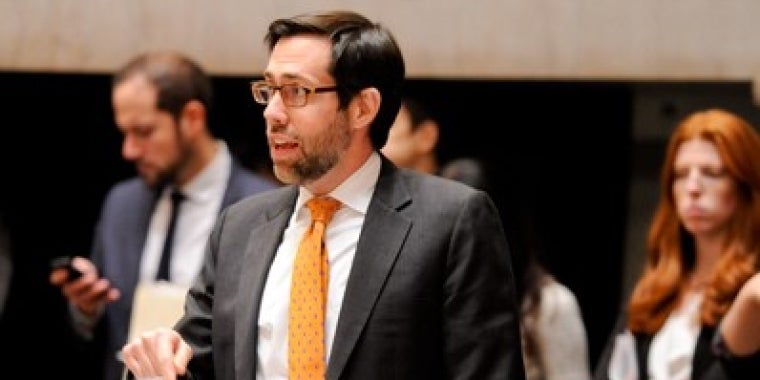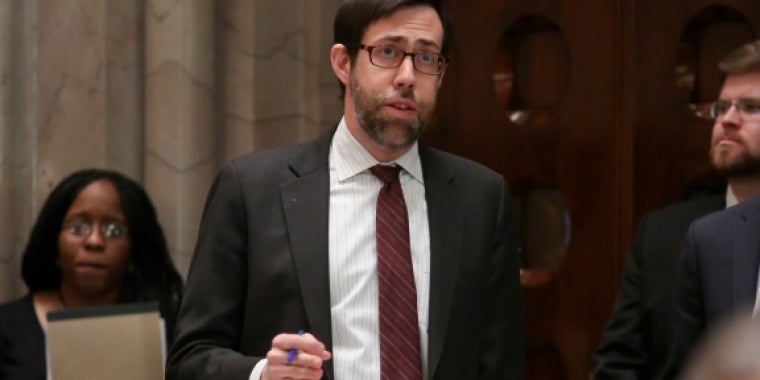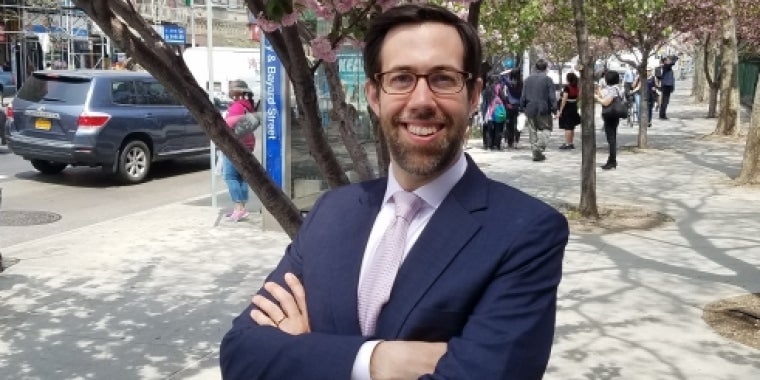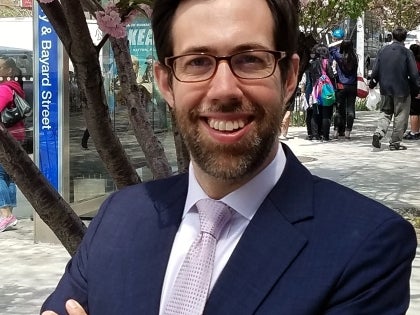
TESTIMONY OF STATE SENATOR DANIEL SQUADRON REGARDING THE DRAFT ANNUAL PLAN 2016 FOR THE NEW YORK CITY HOUSING AUTHORITY
Daniel L. Squadron
August 11, 2015
Below and attached is the testimony of Senator Squadron regarding the Draft Annual Plan 2016 for the New York City Housing Authority.
My name is Daniel Squadron, and I represent the 26th District in the New York State Senate. My district includes the Brooklyn neighborhoods of Greenpoint, Williamsburg, Vinegar Hill, DUMBO, Fulton Ferry, Brooklyn Heights, Cobble Hill, and Carroll Gardens and the Manhattan neighborhoods of Tribeca, Battery Park City, the Lower East Side, Chinatown, the Financial District, Greenwich Village, Little Italy, SoHo and the East Village.
Among the New Yorkers that I represent are the approximately 26,000 residents of 19 New York City Housing Authority (NYCHA) developments, spanning the Lower East Side, East Village, and Chinatown. The developments in my district include Baruch Houses, Bracetti Houses, East 4th Street Rehab, First Houses, Gompers Houses, Hernandez Houses, LaGuardia Houses, Lower East Side I and II, , Meltzer Tower, Rutgers Houses, Seward Park Extension, Smith Houses, Stanton Street, Two Bridges, Vladeck Houses I and II, Wald Houses, and 45 Allen Street.
Fiscal Challenges
The NYCHA Fiscal Year 2016 Draft Annual Plan (Annual Plan) addresses the fiscal challenges the agency faces in providing affordable housing and related services to nearly 500,000 New Yorkers. The Annual Plan notes that NYCHA is confronting “its worst financial position in more than 80 years,” as it faces “nearly $2.5 billion in a cumulative projected operating deficit over the next ten years, and nearly $17 billion in unmet capital needs for major infrastructure repairs.”
Although the dual crises of deficits and long-overdue repairs have persisted for some time, they are not insurmountable. The need to identify ways to preserve our City’s public housing stock for future generations remains urgent, and I look forward to working with Mayor Bill de Blasio and Chair Shola Olatoye to ensure that NYCHA fulfills its obligations to serve as a responsive landlord and building manager for half a million New Yorkers.
For years, I’ve been working with city, state and federal officials and advocates to address the agency’s chronic funding challenges. For instance, I established the Save Our Underfunded NYCHA Developments (SOUND) Housing Campaign, along with Assemblymember Brian Kavanagh, elected colleagues, tenants and a broad based coalition to support public housing and address NYCHA’s long-term financial needs. The campaign was a coordinated effort to ensure that NYCHA got its fair share of city, state and federal funds and that these funds would be spent effectively.
We also long urged the City to terminate the Memorandum of Understanding (MOU) between NYCHA and the New York Police Department (NYPD). I was encouraged when Mayor Bill de Blasio ended NYCHA’s $70 million annual payment to the NYPD. I am now similarly encouraged by the City’s waiver of NYCHA’s annual $30 million payment in lieu of taxes (PILOT).
I applaud NYCHA for putting forward significant proposed financial reforms, though many of these reforms require greater tenant engagement and dialogue. For example, when leasing non-residential ground floor space, NYCHA should encourage incoming commercial tenants to consult with residents and hire local NYCHA residents. In addition, changes in pricing for the resident parking program requires consideration of NYCHA tenants, including more flexible payment plan options and gradual phase-in.
Finally, NYCHA states that it “will more aggressively pursue federal subsidy, including Section 8 for its 5,000 unsubsidized units.” I was proud to sponsor legislation in Albany “federalizing” city and state owned developments, allowing NYCHA to draw over $75 million annually in new federal operating funds and hundreds of millions of dollars for capital improvements. Any proposals to bring NYCHA toward financial solvency must include the type of protections provided by federalization and must maintain NYCHA’s full control over its housing stock to ensure future affordability.
I urge the City to continue working with NYCHA and its tenants, and for NYCHA to continue producing creative plans to finance its deficits, even if I and others take issue with some of those proposals. NYCHA’s financial proposals should serve as platforms for tenant engagement, and final decisions must only be reached when an understanding is reached with residents.
Property Management
At core, NYCHA is a landlord, and property management represents its core responsibility. While NYCHA has taken steps to improve its effectiveness as a landlord, much work remains to be done.
NYCHA has consistently struggled to take timely action regarding tenant concerns on repairs and maintenance. Frustrated residents deserve far greater responsiveness surrounding the repair request process. Any other landlord would not be able to get away with NYCHA’s repairs backlog. Basic management standards must exist regardless of a tenant's income or type of landlord.
I have advocated for NYCHA tenants to be able to file complaints and make requests with 311—a well-functioning entity independent from NYCHA that produces publicly available data. 311 integration should apply to NYCHA’s newly designed mobile app through which residents can submit maintenance service requests, as well as any other initiatives NYCHA pursues related to housing repairs. We have all heard accounts of repair delays spanning weeks and more. Demanding that NYCHA has the tools it needs to perform its primary role as building manager, with competence at responding to tenants, must be our primary goal.
I credit NYCHA for its plan to deploy $3 billion of FEMA funding to repair and protect buildings damaged during Hurricane Sandy. As I have said before, like other parts of the city, my Senate district was severely impacted by Sandy. Thousands of my constituents lost essential services like heat, water, and electricity, and other basic services like transportation and telecommunication. Lower Manhattan has come back in a big way thanks to the persistence of the local community, advocates, and elected officials. NYCHA should continue to engage tenants on all its future resiliency efforts, and ensure integration with broader city and state efforts.
As a property manager, NYCHA must further ensure the safety and security of all its residents. For years, I have been working with NYCHA tenants in my district to establish safer living environments. To that end, I allocated funding for security upgrades to NYCHA’s Alfred E. Smith and Baruch complexes. The direct engagement of NYCHA residents with these plans to improve their security was vital to enthusiastic buy-in. I applaud NYCHA’s plan to invest $100 million to bring similar security improvements to 15 high-crime developments. However, cameras and layered access are needed across developments, especially considering chronic failures of today's entries. Further, the video feed from newly installed security cameras should be linked to local Police Service Areas in order to facilitate more efficient and timely access to issues.
As I have said, NYCHA should focus on its core responsibility as a property manager and landlord. While NYCHA must focus limited resources on these responsibilities, it should also serve as a bridge to other government agencies that specialize in the provision of social and community services. For instance, in 2013, I worked with NYCHA to integrate the Supplemental Nutrition Assistance Program application, via the Access NYC website, into its housing application process, as many applicants are dual eligible. Now, when New Yorkers fill out a public housing application, they are prompted to also apply for SNAP and many other benefits.
Repairs, Construction and Expansion
Instituting a strategic planning process for capital repairs is a far better approach than NYCHA’s patchwork solutions of the past. I am encouraged by NYCHA’s plan to pursue more comprehensive capital improvements that appropriately engage tenants and relevant stakeholders. Our successful efforts to push NYCHA to fully repair the old, faulty gas pipes at Smith Houses that sometimes forced residents to go without cooking gas for weeks or months at a time, along with Aixa Torres, Resident Association President at Smith Houses, can be a model for engaging tenants throughout the NYCHA system.
NYCHA further notes that it intends to “update its decades-old guidelines for renovations and new construction.” This is certainly a positive step. It should be noted that a rat mitigation plan needs to be part of any reformation of construction guidelines, given the number of complaints brought to my office on the matter.
NYCHA’s allocation of $100 million per year for the next three years toward much needed roof replacements among the City’s public housing stock is also a positive development. Dozens of residents and advocates who traveled to Albany to push for a similar state investment expected a comprehensive capital repair program, which would allow NYCHA to focus its efforts on addressing fundamental repairs, with both city and state dollars. I hope this is still possible.
Finally, tenant engagement must be at the forefront of any plans for housing construction and expansion. NYCHA must partner with resident associations to establish how NYCHA and tenants can work together toward developing a collaborative expansion. Such a partnership is the only way expansion efforts can happen.
Thank you for the opportunity to testify today.
